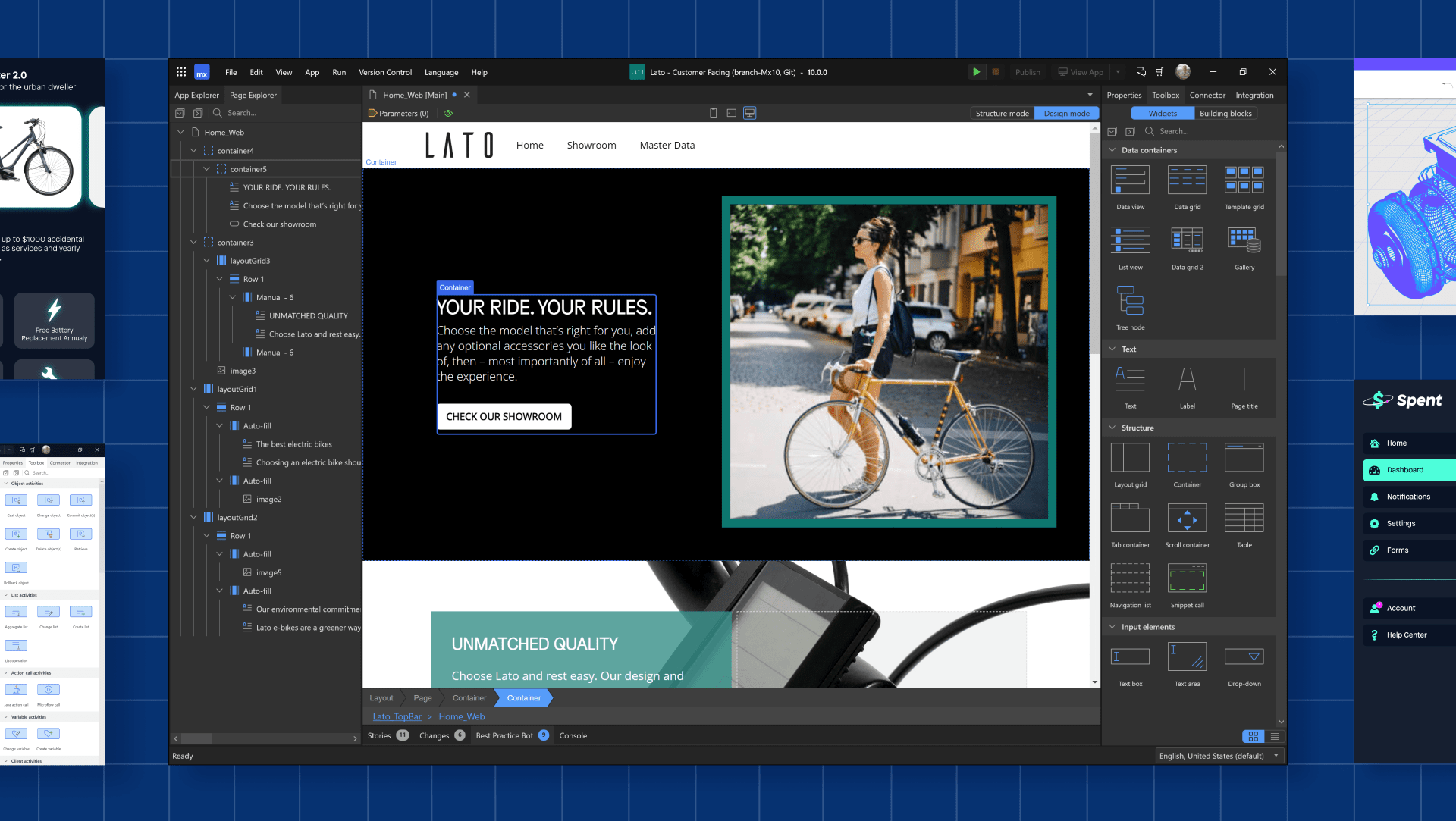Commercial Off-the-Shelf (COTS) Software vs Custom Development

Maybe the contract for your ERP system is up for renewal. Or maybe you’re looking to automate certain business workflows for the first time. No matter the situation, commercial off-the-shelf (COTS) products vs. custom software development is an inevitable dilemma.
Twenty years ago, the choice was far more black and white than it is today. Custom development was a time-intensive challenge best left to expensive professional developers, making COTS software the go-to for organizations in need of an immediate solution or without specialized technical staff. But while COTS excels in convenience and ease of use, it can’t match the high level of customization and long-term value of bespoke software.
If you are weighing the benefits of COTS applications over bespoke software, there might be a better alternative. This third option changes the equation: low-code development. Low-code is an intuitive way for enterprises to build software that is completely tailored to the unique needs of the business, without needing a large staff of highly skilled technical experts— but is it the right choice for your organization? Read on for an in-depth look at your options, including when it makes sense to build and when you should choose to buy.
What is commercial off-the-shelf (COTS)?
According to Gartner, “off-the-shelf” is “equipment that has already been manufactured and is available for delivery from stock.” More specifically, commercial off-the-shelf (COTS) is ready-made software designed for use by a wide range of customers. COTS products include everything from Microsoft Exchange, to payroll and claims processing tools, to ERP and CRM systems.
Since it’s produced for the masses, COTS software follows a “one-size-fits-all” approach guided by general best practices. Here’s why businesses turn to COTS solutions:
1. Convenience
COTS software has a lot of appeal for businesses of all sizes and industries because it’s readily available. If you need a straightforward solution, you could have a new COTS application implemented in a matter of days. More complex systems can also be deployed quickly.
2. Predictable costs
Compared to the alternatives, COTS products typically have more predictable costs. Because there are few options for customization, annual licensing is typically the only long-term cost after initial implementation. Support, software updates, and patches are also handled by the vendor.
The problem with “one-size-fits-all”
Organizations are not “one-size-fits-all.” COTS products aren’t built with your company’s exact functionality needs or goals in mind, so it’s almost guaranteed that the software will be lacking in at least one area. You may also find that some software comes with a batch of features that you don’t need, but are paying for.
Let’s say you’re looking for new ERP software to enhance financial and operational workflows. After browsing vendors, you find a few options that fit your immediate needs — but what about six months down the line when your company acquires a competitor in APAC? The COTS solution that was once the perfect, quick fix now needs to support a larger, global workforce. Is it able to scale? Is it compliant with the regulatory environment of other regions? Can it integrate with a new set of existing systems?
The likely answer to at least some of those questions is no. COTS solutions prioritize solving a specific problem, not adapting and expanding to adjacent use cases.
Companies grow and evolve constantly, but COTS software is always a few steps behind. As an out-of-the-box solution, COTS products aren’t really customized so much as configured. Fully integrating with your IT infrastructure can require some extensive rigging by an experienced developer. Even solutions with broader-than-average capabilities can only be configured within the boundaries of the tool. These limitations often lead businesses to adapt their processes to fit the tool, when really it should be the other way around.
Even modified off-the-shelf (MOTS) software — COTS with some amount of control over customization— is limited. Customizations are not typically supported by vendors and will require custom coding — an expensive process you were likely trying to avoid by purchasing an off-the-shelf product.
COTS vs. custom: When to build and when to buy software
Custom development isn’t necessarily the right choice in some scenarios, and the same can be said for low-code. Here are issues to consider when making the choice whether to build or buy.
| When to buy software (COTS) | When to build software (low-code) |
|
|
|
|
|
|
Custom low-code software development
For quite some time the general consensus around bespoke enterprise software development was that it was a colossal business investment, both in terms of cost and time. While this may still hold true for traditional development, low-code software development is an entirely different story.
Enterprise low-code platforms take a visual approach to custom development with intuitive drag-and-drop interfaces, reusable components, communication tools, and a host of other features to guide you through every step of the application lifecycle. You can build fully customized solutions faster and more affordably than with traditional development, and there are no hard coding skills necessary.
Low-code platforms make custom development not only possible, but quick, easy, and cost-effective. Here’s how:
1. Flexibility and scalability
Build anything from simple process automation apps to modernized core systems. Low-code platforms operate in the cloud, giving you the flexibility and scalability necessary to build applications for your organization’s current and future needs. You can also continuously enhance applications as business processes evolve.
2. Business-IT collaboration
Low-code operates in a visual development environment to streamline cross-departmental communications. Instead of traditional coding languages like Java and C#, you build using visuals like iconography, diagrams, graphics, and logic. Everyone can collaborate and communicate using this common language, which helps teams build more powerful solutions in less time than custom development.
3. Low total cost of ownership
The up-front cost of custom development may be higher than with COTS products, but the math changes with low-code. Faster time to market, lower operating costs, larger set of staff who can use the tools, and total in-house control over the product make low-code a significantly more cost-effective choice in the long run.
The limitless ROI of low-code
NC State University knows the build vs. buy decision-making process quite well. The university weighed both options when it came time to build a cost-effective, course registration system to process over 500,000 signups every year. More than 100 campus entities offer courses, and each relied on a different registration method. The disparities made reporting processes inefficient, and the university’s decentralized IT architecture created standardization challenges. On top of all this, NC State must follow strict federal, state, and PCI DSS compliance requirements.
NC State needed a better solution, but they didn’t have the time or funds for traditional in-house development. Instead, they released an RFP for a customized COTS solution with the hope that a third party could help. The responses from COTS vendors were unsustainable: $3-10 million over a five-year period.
Traditional development was out of their price range, and it was clear that a custom COTS solution was also out of the question. Anxious for an affordable, fast alternative, NC State started to search for a different kind of solution, “that’s when we started to become aware of low-code platforms as an alternative to rapidly develop and deliver code,” says Gwen Hazlehurst, Assistant Vice-Chancellor, Enterprise Application Services at NCSU.
Using Mendix, a team of in-house IT developers, staff from the Registrar’s office, and student interns were able to build and release a new system called REPORTER in just six months with a total investment in the low six-figures range. REPORTER was so successful that NC State also used Mendix to build additional solutions. Read the complete NC State University customer story here.
Is a low-code platform what you’ve been looking for?
Low-code provides more flexible software solutions than alternatives like COTS products and COTS applications. With a low-code development platform, cost and time to market are no longer barriers to implementing a solution custom-made for your organization’s exact needs. While COTS software lacks customization capabilities and adaptability, low-code automation platforms make anything possible for organizations’ current and future needs – with a staff who has a general technical skillset.
Mendix’s low-code application platform is designed for citizen developers, professional developers, and everyone in between. Enterprises can ditch “one-size-fits-all” generic solutions for one-of-a-kind, fully tailored software. The platform can also supplement your core systems, giving you the flexibility to evolve at the speed of business.
See how custom development is made easy with the Mendix low-code Platform

